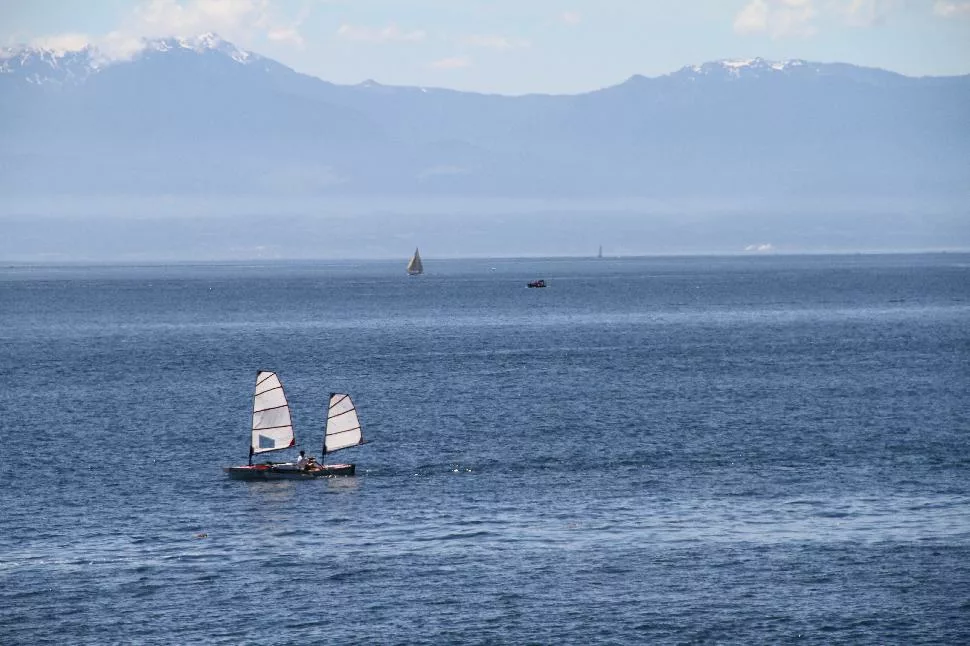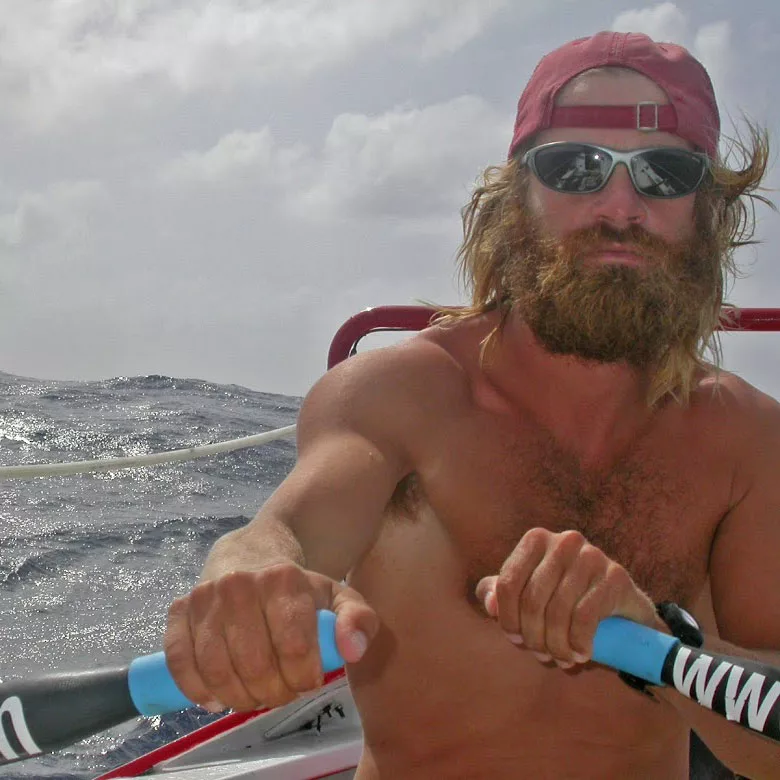Angus Adventures: Solo to Alaska

As I rowed through Revillagigedo Channel mid-morning, I struggled to keep my eyes open. I’d been awake since 5:00 a.m. the day before and I was semi-delirious. A sudden roar, like a spontaneous thundering waterfall, tore me from my stupor. Fifteen metres off my port side, a killer whale surfaced and was charging towards my tiny, four-millimetre-thick-plywood vessel. A third of its body was exposed; its dorsal fin towered three metres above the water. There was no doubt in my mind, we were going to collide. I dropped my oars and grabbed the gunwales.
Remarkably, the orca submerged as quickly as it surfaced and missed my boat by less than an arm’s length, its giant body gliding beneath my hull. I was both awed and awakened by the encounter. Rationally, I knew a collision was unlikely as orcas are remarkably capable creatures that are keenly aware of their surroundings, but still, I couldn’t help feeling like I’d narrowly escaped disaster.
This whale encounter occurred on my final day in the Race to Alaska (R2AK). Dubbed the “Iditarod of Boat Races,” the R2AK is arguably North America’s most gruelling boat race. It starts in Port Townsend, Washington and ends 1,200 kilometres later in Ketchikan, Alaska. The rules are simple: no motors, but anything else goes. Boats can be sail-powered, human-powered or a combination of both. The route takes in the entire west coast of Canada, which includes both inspiring scenery and challenging waters. Bus-sized whirlpools, rip currents, large ocean waves, wind, fog and torrential rain are all part of the mix and pull your attention from the rugged coastline, looming mountains and active marine life.
The race drew an eclectic mix of boats and characters, from a million-dollar multihull sailboat renowned for winning the Transpac sailing race to a guy on a stand-up paddleboard. My own entry was a self-designed-and-built rowboat with an auxiliary sailing rig. My overall goal was to do well in the under-20-feet division and amongst other solo contenders. The competition was intimidating and there were lots of high-performance vessels including a Hobie Cat, Windrider 17 and SeaScape. These were fast boats that had been designed by some of the world’s top nautical engineers and finessed through years of sea trials. I built my boat in my garage and this would be its first major voyage.
The luxury of designing your own boat is that you can customize it to your specific needs. So along with performance and seaworthiness, I wanted a cabin I could sleep in. This would allow me to drop anchor and rest in the boat instead of going ashore each night. I’d save time by not having to set up camp, and I wouldn’t need to worry about grizzly bears and other wildlife. On the other hand, my cabin was Lilliputian, bearing more of a resemblance to a coffin than any kind of living space. By the end of the journey, I had spent nearly two weeks in a damp canoe-sized boat and I was more than ready to forsake my claustrophobic craft.
Until my close encounter with the killer whale, things had been going relatively well. The winds were mostly benign, and when it was rough, the boat handled the seas with aplomb. A couple of lucky tactical decisions gave me almost a two-day lead over my next competitor, a Windrider 17 crewed by two. But an absence of wind meant I spent long days rowing, creating painful callouses on my hands and I was gradually being worn down.
The passing scenery motivated me through the drudgery. In BC’s Great Bear Rainforest, huge tracts of old growth trees lined the shores. In the convoluted channels of the Inside Passage, mist-shrouded mountains plunged into the ocean and hours passed without seeing a sign of another person. There were no cabins, log booms or other manufactured creations. Just a glorious wilderness and a feeling of having been transported to time before humans.
Despite the solitude, I never felt alone. I watched a bear saunter along the shore as I prepared to drop my anchor. When I rowed, seals, otters, muskrats, sea lions and porpoises made regular appearances. I saw four pods of killer whales and dozens of humpback whales. Scientists have found that humpback whales are making a profound resurgence along the BC coast, and I felt humbled to witness that.
For the final two days, visions of the big juicy hamburger I would eat in Ketchikan kept me going. I carried all my food from the start, and although it contained plenty of calories—6,000 per day—it was becoming pretty monotonous. Trail mix, granola bars and freeze-dried pasta dinners lose their sheen pretty quickly.
Despite the beauty, adventure and mystique of voyaging Canada’s wild west coast, there’s no denying that spending 13 days travelling as fast as human-power allows is a slog. At times it was outright misery. Forcing myself to pull anchor at 5:00 a.m. in the pouring rain, settling my chafed, soggy bottom onto the rowing seat and wrapping my burning and blistered hands around the oar handles was nothing short of agony. On days with no wind, I would pull on the oars for as long as 15 hours. There were times when I questioned why I had ever decided to put myself through such a challenge. I think Bill Gifford, skipper of a Montgomery 17-foot sailboat and two-time R2AK competitor, summed it up best. “You can do it in a cruise ship or a ferry, but unless you truly immerse yourself, struggling by your own means along every inch of the way, you’re not really going to experience it.”
When I finally did reach the docks of Ketchikan, squeezing between berthed cruise ships and departing fishing boats, I felt both elation and sadness. I was handed a cold beer by the race organizers and told I had won a $1,000 prize for being the fastest boat under 20 feet. Within minutes, the burger would be tossed on the grill. But at the same time, my experience of being immersed in some of Canada and Alaska’s most dramatic landscapes had come to an end. I knew I’d be seeing it all again when I went back home on the two-day ferry ride, but it wouldn’t be the same. Like watching a National Geographic documentary on an ultra-high-def TV—the ferries provide the view, but not the spray in the face, or the pain, or the dirt or the heart-pounding moments when you think an orca is going to run you down. But, you know, that’s kind of nice too.














